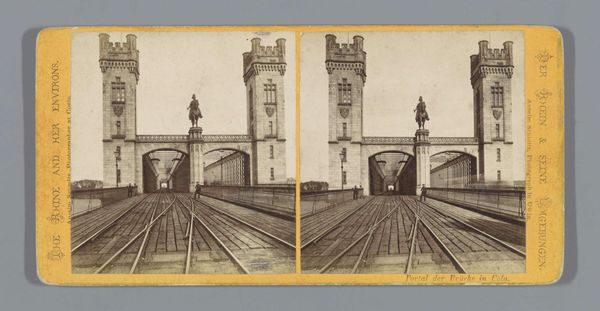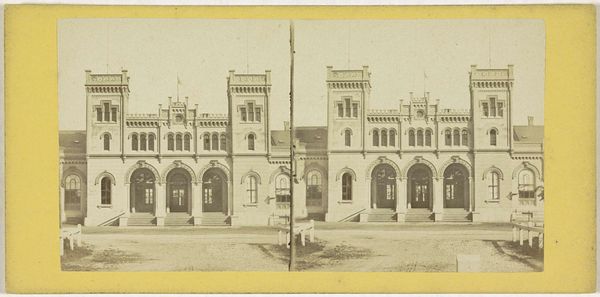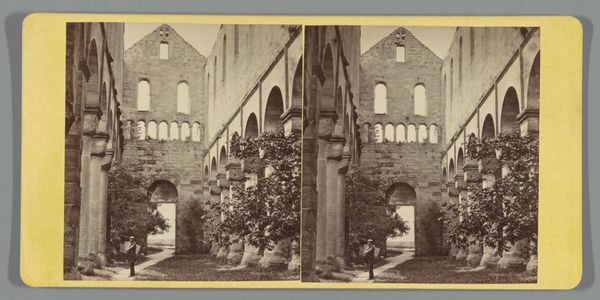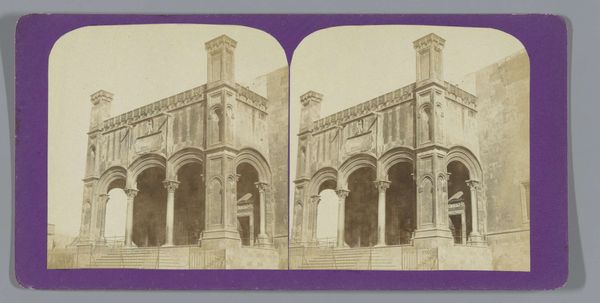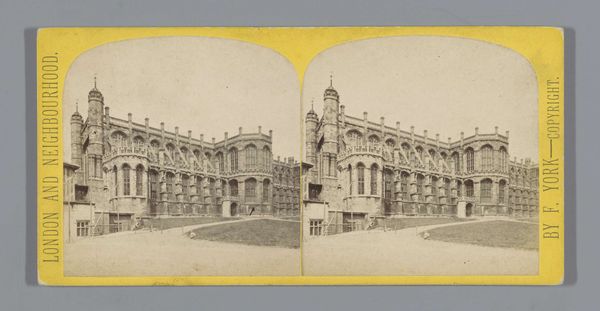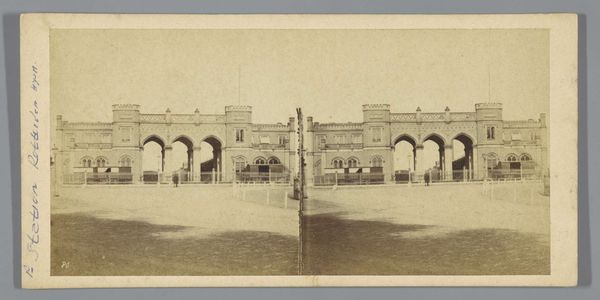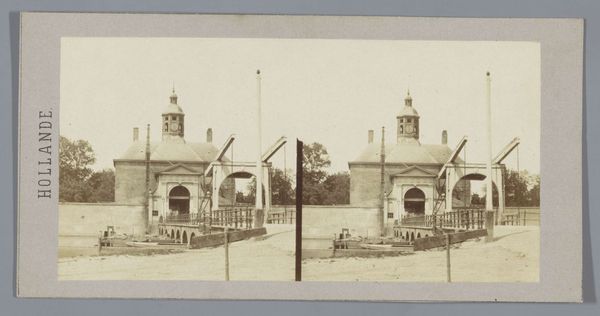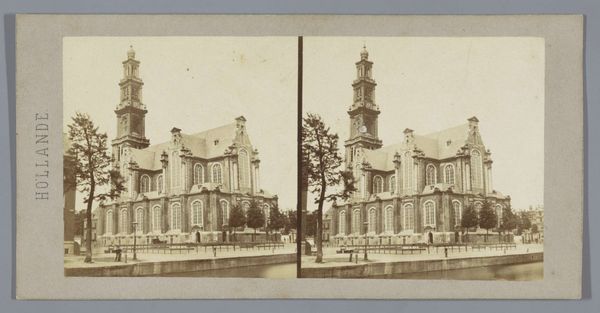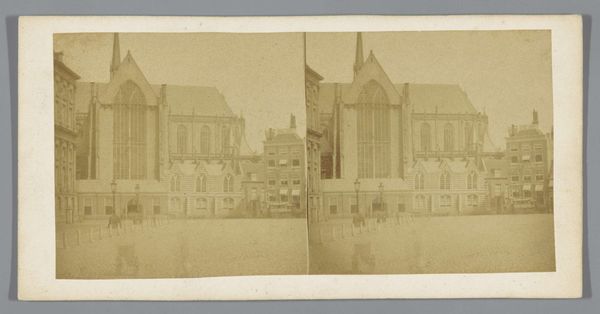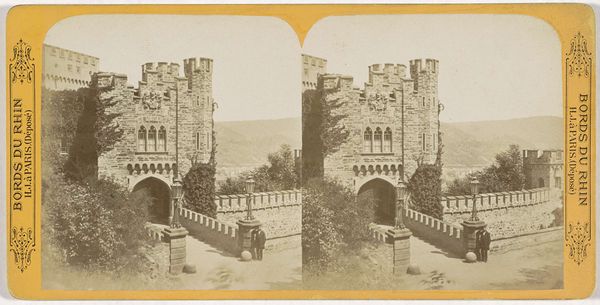
print, photography, collotype
# print
#
landscape
#
photography
#
collotype
#
cityscape
Dimensions: height 82 mm, width 175 mm
Copyright: Rijks Museum: Open Domain
Curator: This collotype print captures the Dombrücke in Cologne, circa 1864, by Charles-Henri Plaut. What’s your initial take? Editor: Oh, wow, it feels like stepping into a dream… or maybe a vintage postcard. Everything's so meticulously structured yet soft around the edges. Gives off a kind of sepia-toned tranquility, even though it's just a bridge. Curator: Precisely. Observe how Plaut harnesses the collotype technique to render an astounding tonal range, focusing sharply on the bridge’s architecture. The twin towers anchor the composition, providing a rigid geometric frame. Note how they employ visual grammar and structural logic in their vertical rise to give a sensation of balance? Editor: Absolutely. I'm really digging the play between the sturdy stone and the intricate ironwork. It's like a dance between strength and fragility. It really makes you think about the industrial revolution meeting the romantic era. Plus, that hazy light… it kinda whispers stories of old cobblestones and horse-drawn carriages. I want to write a story about that bridge! Curator: Indeed. The image’s structure allows one to engage with it using structuralist interpretation; one may dissect it into smaller relational units, such as its various visual binaries… The presence of railways underneath, for example, hints at broader themes, modernization, and infrastructural progress shaping 19th-century urban life. Editor: That is a fresh angle, because it makes me now sense a hum of activity, hidden but persistent, contrasting the apparent calm we initially perceived on its surface. Sort of like secrets that the bridge silently bears through the decades. Does make one contemplate the river beneath too and all that reflects upon its passage. Curator: Precisely! Editor: You know, I love how even though it's just an image of a bridge, it evokes so much. Nostalgia, history, and maybe even a little melancholy. Really gets you thinking about time and change, doesn’t it? Curator: Yes. Considering its interplay of form, light, and socio-historical significance, the artwork creates rich fields of discourse that demand scholarly rigor, it offers a window into comprehending visual representation, architectural symbolism, and historical transformations within the visual field.
Comments
No comments
Be the first to comment and join the conversation on the ultimate creative platform.
